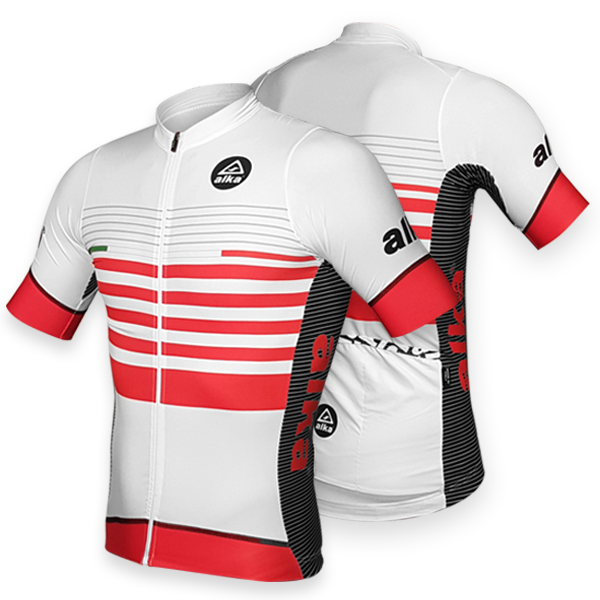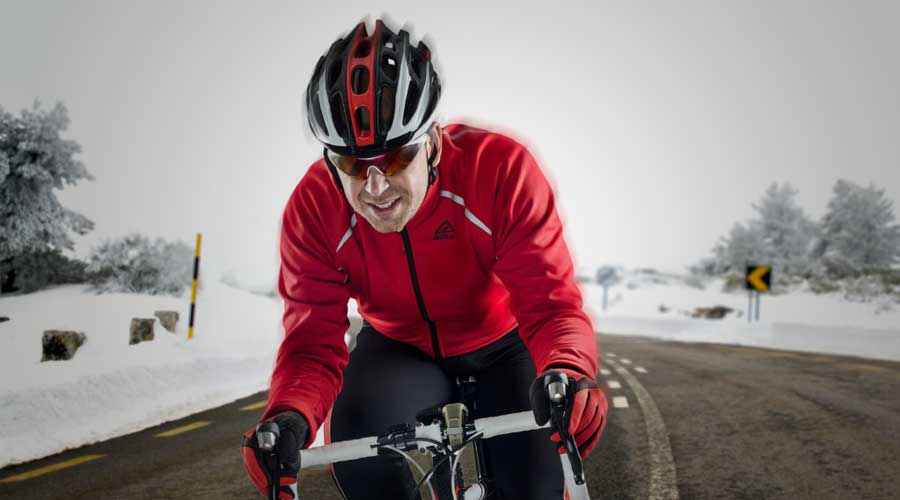The right preparation and the right clothing allow you to train and have fun on two wheels even in winter
It is a well-established commonplace that the bicycle is a suitable vehicle only for the summer months. But with the right equipment there is no limit to passion and fun. Of course the cold and the bad weather can be scary, but winter can also give unique atmospheres and sensations, landscapes and formidable colors! Winter can indeed be a season in which to experience the bicycle with renewed satisfaction, provided you keep a few simple precautions in mind.
Treat clothing
It is thought that playing sports outdoors, with low temperatures, can weaken the body and increase the chances of having to cope with flu and colds. In truth the physical activity in the open air in the cold months is able to stimulate the immunity defenses strengthening the organism and diminishing the onset of seasonal illnesses.
We must learn from those who know how cold it is: in a large northern city such as Copenhagen, although there is a time of wolves for almost the whole year, the most widespread means remains by far the bicycle. If you ask a Danish, he will tell you that “there is no bad weather, only bad clothes”. So as not to put limits on our desire to pedal even during the winter it is then first necessary to procure clothing that keeps us dry and that keeps our body temperature stable even on longer-lasting rides.
It can be useful to dress in layers, to be ready for varying temperatures and to create an equipment that is easy to modify and with the right balance. First of all, the underwear must be taken care of, essential to maintain the temperature of the” engine “, the trunk and vital organs In addition to being warm, underwear must be breathable so as not to make you sweat excessively, and merino wool is often used for these garments, a material capable of combining these two characteristics, mixed with synthetic fibers of greater elasticity.
Equally important is the outer layer, consisting of a jacket or cape that must be waterproof and must be able to block the wind. The intermediate layer that can be formed, for example, by a long-sleeved thermal mesh that is added to a winter overalls should also be evaluated. In general, this layer must also be heavy enough to avoid excessive heat loss, but light enough to avoid excessive sweating. It must not be forgotten that feeling a little cold at the start is completely normal.
If keeping the trunk warm is essential to maintain a high level of performance, we must not neglect the extremities, which are always very exposed and risk a sharp drop in temperature. We therefore need to wear winter cycling shoes that are also waterproof and often they also cover the ankle.There can also be heavy socks in wool or in technical fabric and, even if they are more uncomfortable and bulky, good winter gloves cannot be overlooked.Shorts and leggings then serve to keep the arms and legs warm.
Finally, to complete the equipment, a hat or cap, to be worn under the helmet, that is able to maintain the temperature and block the wind is fundamental. Usually these specific cycling caps are made with a waterproof outer fabric and a padding that also protects the ears.
Equip the bicycle
In recent years, fat bikes have become increasingly widespread, bikes with wider wheels that provide greater stability and were originally designed specifically for the snow-covered soils of Alaska. But it is not necessary to buy a new bicycle to walk on snow-covered roads. It may suffice to equip one’s own with good winter tires capable of providing the necessary grip, perhaps kept at a lower pressure than normal.
It is also very important to fit fenders with adequate dimensions to prevent sleet and water from being lifted from our wheels and ending up on your back. This in addition to being extremely annoying in the long run would make our carefully selected waterproof clothing useless.
Consideration must also be given to the visibility conditions that are usually worse during the winter season and can change quickly. It is therefore a good idea to use special care and always be equipped with signal lights for your bicycle.
Adapt your driving style
Last but not least: to ride safely in the winter season you will need to take some special precautions when riding the bicycle. For example, it will be necessary to avoid bending excessively in curves, which are made more insidious by humidity and atmospheric agents. For the same reason it will be important to avoid drains and metal parts as much as possible.
In general it is useful to keep a seat that is not too rigid, but relaxed and with a slightly set back center. That helps to better control the bicycle on terrain made unpredictable by snow and ice and allows you to react quickly but smoothly, cushioning with your legs, in case of surprises. It is obviously essential to pay close attention to the use of the brakes, which should be used as little as possible and never abruptly.
Where possible it will also be useful to maintain a fairly central position in the roadway, to make oneself more visible and avoid the dangerous residues of snow that accumulate on the sides of the road.



